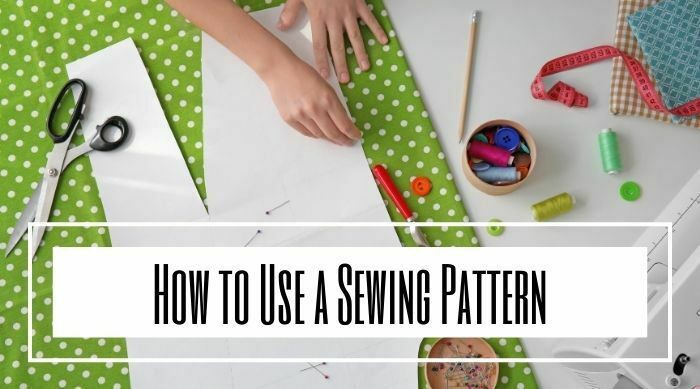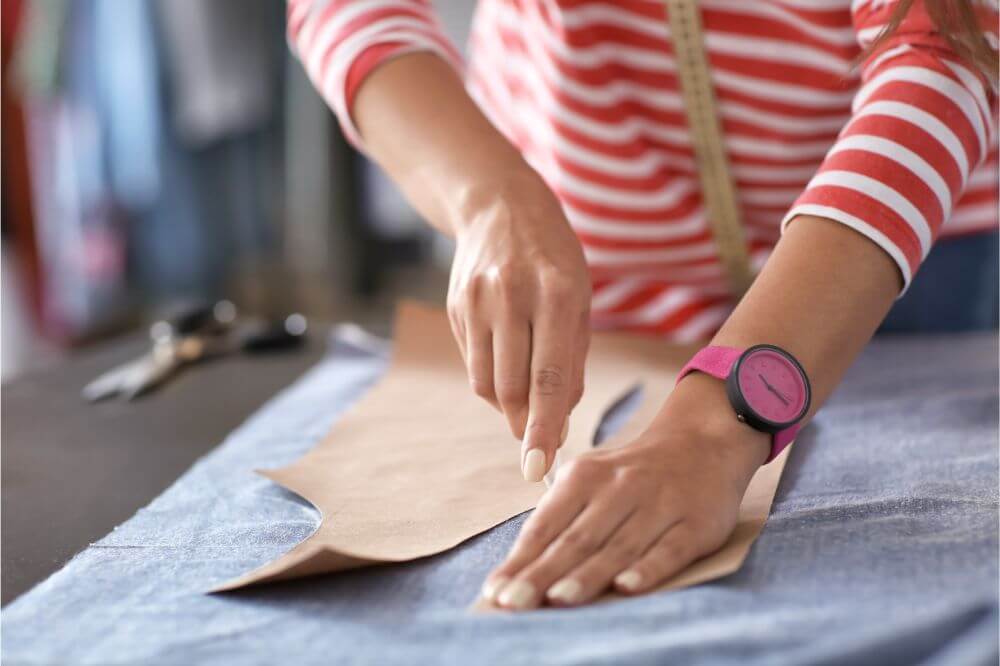How To Use A Sewing Pattern
Sewing is a fun pastime for the more “right-brained” people who love being creative. A sewing pattern serves as a guide when sewing a piece of clothing, but it can also help you with the correct sizing of an item.
If you want to sew a new jacket or a pair of pants, you’ll be happy to learn that it does not require a large amount of skill and is a great project for beginners. If you have never tried sewing before, why not follow our tips on using a sewing pattern to create unique, handmade clothing?
Below, we are going to take a look at how to use a sewing pattern so without further ado, let’s get right into it!
What Is A Sewing Pattern?
A sewing pattern is a set of instructions for making a particular garment or item of clothing. They print the pattern on wax-like paper and include markings and lines that show how the fabric of your garment should be cut and put together. Sewing patterns are available online for digital download or sold in envelopes with sizing charts and instructions.
Why You Should Use A Sewing Pattern
Every design starts with a plan. And in sewing, this plan comes as a sewing pattern. Sewing patterns have detailed instructions, tips, sizing charts, and more on creating the perfect piece of clothing. They are great for people of all sewing skill levels and do not require that you use a sewing machine. Sewing patterns are easy to follow, and garments can be sewed by hand.
Sewing is fun and gives you the chance to create your own clothes, saving you time, and exercising that all-important right brain. Join a sewing club, meet with other like-minded people through social media, and read forums and blogs relating to sewing that can help you start your hobby. It might just turn into a passion.
How To Use A Sewing Pattern
If you have bought a sewing pattern but are unsure how to use it to create your clothing item, we have created the ultimate step-by-step guide on how to use it. In our guide, you will find information about measurements, fabric types to use, the symbols you need to learn, and how to cut and sew your pattern into a beautiful outfit. Let’s dive into the world of sewing and create a garment from scratch.
Step #1: Measure your body
We need accurate measurements to create a custom-made piece of clothing. Measure the body according to the instructions on the pattern envelope, considering the sizing chart available on the sewing pattern to create clothing made to fit.
Step #2: Always follow instructions
Instructions are provided on the product packaging for a reason and should be followed by the letter.
Read the instructions before opening the product packaging and understand what you need to do. The instructions will also include information about the fabric you could use for that item, how much of it to buy, and also how much extra fabric you would need for pockets, hoods, etc. One should follow fabric suggestions closely as this influences how the garment will hang or fit.
Step #3: Take time to learn the symbols and markings
Sewing patterns have many markings and symbols that can confuse a beginner. Please re-read the instructions and take time to note what each marking means and what we use it for.
The most common markings and symbols used on all sewing patterns are:
Dots
- These are to help align the pattern and the fabric perfectly.
- Show darts, pleats, tucks, and pockets.
An X
- This shows where a button should be placed.
Triangles
- These are often called notch marks and are also used to align the pattern and the fabric perfectly.
Step #4: Lay out the pattern on the fabric
Using a fabric pencil, trace out your pattern, including the symbols and markings you identified in step 3. Pin the pattern to the fabric to make it easier to cut the pattern out. If you read the instructions correctly, you should have the perfect amount of fabric for your pattern.
Step #5: Sew, Sew, Sew
Possibly the most exciting part of using a sewing pattern is when you put all the cut-out pieces together, sew them, and create a unique handmade garment. You will not need a sewing machine and can sew the pieces together by hand. If you are using a sewing machine, you will need to know the basics, like threading, the different stitch types, and the cotton needed for your chosen fabric.
Where To Find Sewing Patterns
You have the fabric; you have the scissors and a sewing machine. Where to buy the sewing pattern? Sewing patterns are available online for digital download or could be bought from a craft or haberdashery store. You can search online for stores in your area or speak to someone you know who sews as a hobby or craft.
With the rapid advancement in technology today, you can find just about anything online. And this, too, applies to sewing patterns. There are websites, social media pages, online clubs, and more dedicated to the craft of sewing.
All you need is a printer, your fabric, scissors, pins, and your needle and thread to create your dream outfit. From everyday wear to a glam outfit for a party, the options of what you can create using a sewing pattern are endless.
Conclusion
Using a sewing pattern to create your garments makes the process much more straightforward, with detailed instructions, sizing charts, and tips available on the sewing pattern packaging. The perfect hobby for creative people of all skill levels, sewing allows you to create something beautiful with little to no hassle.
If the hobby or craft of sewing has caught your attention and you want to know more, visit online blogs, social media pages, and hobby groups. You can start your sewing hobby today. Choose your pattern, buy your fabric, and get sewing.


